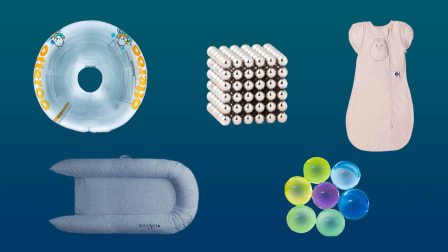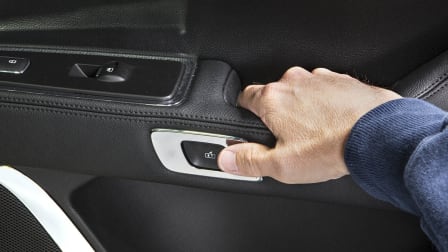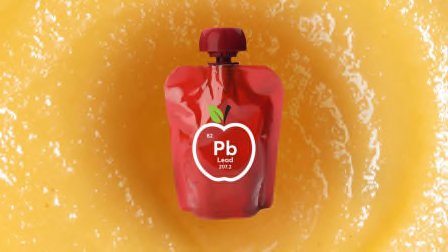Important Toy Safety Tips for Holiday Gift Buying
What you need to know before shopping for the items on your child's wish list

We all want our children to have a memorable holiday—and a big part of making happy memories is keeping everyone safe. While toy safety is important year-round, consumers should keep a few important things in mind when considering toys for the children in their families during the frenzied holiday shopping season.
According to a Nov. 16 report from the Consumer Product Safety Commission, there were an estimated 174,100 toy-related ER-treated injuries and seven deaths involving children younger than 15 last year. The toys involved included a rubber ball, a balloon, and numerous riding toys.
These toy safety tips can help guide your holiday shopping.
1. Buy Age-Appropriate Toys
Examine toy labels closely to make sure they’re age-appropriate for your child. The CPSC encourages manufacturers to clearly label toys with age guidelines, and the agency requires age labels to be accurate. To that end, the agency offers Age Determination Guidelines to help manufacturers identify the correct set of consumer product safety standards applicable for each kind of product, from rattles and blocks to puzzles and games.
For example, federal small parts regulations ban any toys intended for use by children younger than 3 from being or having small parts—including any pieces that may break off from a toy when a child is playing with it. As any parent with small children knows, toddlers love to put things in their mouths, and this regulation prevents toys from becoming a choking hazard.
Per these regulations, a “small part” is defined as anything that fits completely into a test cylinder slightly smaller than a toilet-paper tube, which approximates the size of a fully expanded throat of a child.
Age appropriateness is important when you’re shopping for your older children as well, explains Don Huber, director of product safety for Consumer Reports. You may want to reconsider buying something with a lot of little pieces if there’s a chance it could fall into the hands of a younger sibling, he says.
If older children are playing with their toys in the same house as toddlers, Huber recommends that parents supervise play to be sure that any children younger than 3 don’t have access to toys with small parts.
That includes fidget spinners, which, though wildly popular with children, aren’t necessarily safe for the younger set: Some may have small parts—such as the weights in the “arms” of the gadgets—that could break off and present a choking hazard.
2. Avoid Toys With Unsafe Lead Levels
Fidget spinners could also pose another risk, Huber notes: They could contain unsafe levels of certain substances that the CPSC says kids should not be exposed to.
In a recent example, a November report by the U.S. Public Interest Research Group Education Fund found that two fidget spinners from Target had “dangerously high levels of lead, well over the federal legal limit of 100 parts per million (ppm) for lead in children’s products.”
In an emailed statement to Consumer Reports, a Target spokeswoman said that the products were being removed from store shelves because of the concerns raised by the U.S. PIRG report, but she asserted that both products complied with all CPSC guidelines for fidget spinners. She also added that Target is working with its vendors to ensure that all the fidget spinners the store carries meet the CPSC’s guidelines for children’s products.
“If you are considering buying a fidget spinner for your child, you should only buy one that is intended for use by children—those that are marked as being suitable for children 12 and younger,” CR’s Huber advises. “These products are required to meet the toy safety standard and will not contain excessive levels of lead and other heavy metals, and phthalates.”
Visit Consumer Reports’ 2017 Holiday Gift Guide for updates on deals, expert product reviews, insider tips on shopping, and much more. And be sure to check our Daily Gift Guide.
3. Beware High-Powered Magnets
Though high-powered magnet sets may be marketed to adults and contain safety warnings about their risks, these super-strong magnetic balls can be attractive to children.
According to the federal toy safety standard, a “hazardous magnet” is one that has a flux index (a measure of the force of attraction between the magnets) greater than 50 kG² mm² and that is also a small object. These magnets can prove extremely dangerous if two or more of them are swallowed and come together in the intestines, and they should always be kept away from anyone younger than 14.
The CPSC issued a rule prohibiting the sale of high-powered, rare-earth magnets in 2014, but a court decision in 2016 overturned the CPSC’s ban. Since then, many of these types of sets have returned to the market.
“These aren’t like normal magnets. If they’re swallowed, they can cause serious, lifelong injuries or even death,” says William Wallace, policy analyst for Consumers Union, the policy and mobilization division of Consumer Reports.
Consumers Union expressed concern when the court overturned the magnet ban last year. This week CU, pediatricians, and other safety advocates issued a letter applauding a stop-sale action for high-powered magnet sets sold under the Zen Magnets brand and urged the CPSC to establish a safety standard for all rare-earth magnet sets.
“As we approach the holiday gift-giving season, consumers should avoid all small, high-powered magnet sets—especially if they have children around,” Wallace says. “We continue to urge companies not to put dangerous products like these on the market and the government to hold them accountable for safety.”
4. Ride Safely
According to the CPSC’s report, riding toys—specifically nonmotorized scooters—were the category associated with the most injuries and contributed to almost half of toy-related deaths. All the fatalities involved motor vehicles, so it’s important to supervise kids and make sure they’re not riding on streets with cars.
It’s also vital to make sure your child has all the right safety gear for cruising around—and that means there should be a properly sized helmet, as well as elbow and knee pads, to match that new scooter under the tree.
(Check out CR’s bike helmet Buying Guide and ratings.)
5. Check for Recalls
From defects such as choking hazards to toys that can catch fire, the CPSC issued 28 toy recalls in fiscal 2017. It’s a good idea to check the agency’s list of recalls when researching gift ideas for the younger set.
And remember, your job isn’t over when all the gifts have been unwrapped and the kids are happily playing around the tree.
“When bringing new toys into the home, it’s a good idea for parents to engage with their child in play and provide supervision for appropriate, safe play,” Huber advises.




















